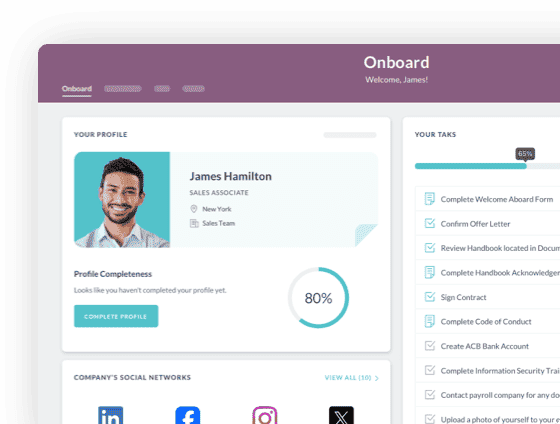

 Cut onboarding time
by 60%—here's the
Ultimate Checklist
that helped do it.
Cut onboarding time
by 60%—here's the
Ultimate Checklist
that helped do it.
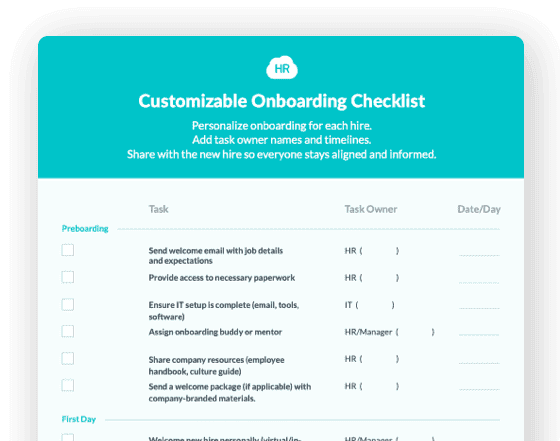
Employee engagement has been corporate jargon for most businesses. Every organization realizes that high remote employee engagement drives greater success and higher profitability. Given that, entrepreneurs and HR professionals consistently brainstorm to evolve new strategies for achieving improved employee engagement. However, a larger part of the global workforce remains disengaged from work. In its Global Workplace Report, Gallup presumes that not more than 15 percent of workers are actively engaged in their work. Hence, there is a need to bring paradigm shifts to the existing strategies that are proving to be a little effective. Not to forget, a large part of employees across the globe are working from home in the current era.
The colossal rise in the culture of remote working brings new challenges for HR managers. No doubt, this style of working is a win-win situation for everyone. It has fascinating benefits to offer to both employees and employers. According to remote working trends from Forbes, 70 percent of the global workforce will be in remote work by 2025. Besides, a Gartner CFO survey suggests that two-thirds of employers may allow permanent work from home for their employees. Hence, in the coming years, there will be more hybrid offices and virtual meetings. Plus, there will be more virtual hiring, which will see remote employees working from different time zones. However, engaging remote employees is going to be a greater challenge for organizations with the exponential rise in remote work.
It would only be prudent to say that remote working is the way forward. It may have emerged as a safe and viable alternative in the pandemic, but now it holds the key to the future of the corporate realm. Despite the astonishing benefits of its inculcation, the trend of remote work does pose remote work challenges for HR managers to manage remote engagement. However, these challenges can be kept under check with some outside-the-box strategies. Creativity is the most important skill in the world, after all. With creativity and rationality, all challenges can be made to concede defeat. In this meticulous blog, we glance at some fabulous ideas for active remote employee engagement and remote team bonding, including virtual employee wellness initiatives and employee engagement activities.
Worthwhile Ways to Engage a Virtual Workforce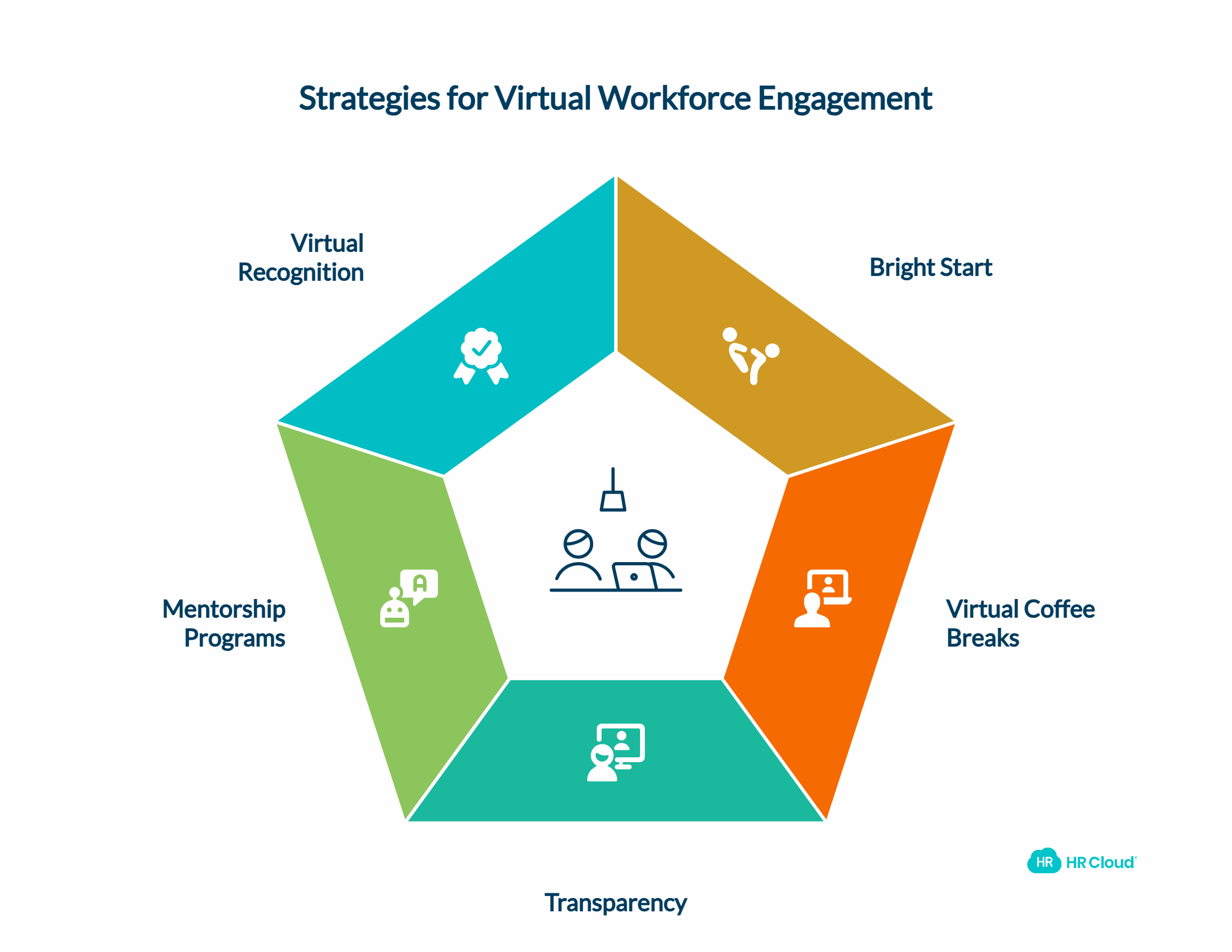
1. Give a Bright Start to Everyone’s Day
HR managers and employers often organize engagement activities in the workplace. Now that offices have gone virtual, it is time to take these activities virtual, too. The levels of employee engagement depend on how positive employees feel. To keep remote employees engaged and to start their day on a bright note, HR managers can organize online yoga, aerobic, or Zumba classes as virtual wellness ideas. These can prove to be highly rewarding employee engagement activities. Much before office time, employees can be engaged with online wellness sessions via video conferencing. To cite an example, if the login time for work is 10 am, virtual corporate wellness activities can be held at 8 am every morning. After a small session, having begun on an energetic note, employees can then take a small break before they begin their work. This can be one of the most productive ways to help employees maintain a work-life balance and boost employee morale.
Building such a coordinated morning routine for everyone will have multifarious merits. While it will give a fresh start to everyone's day, it will also promote the idea of employee well-being. Mental and physical fitness are salient to employee engagement and their capability to perform with persistence. So, when they meet each other virtually in the morning and participate in fitness modules with zeal, it will keep their productivity and mood enhanced for the rest of their day. As per the findings of a recent survey by TELUS International, mental health is a prime concern for workers. More than 80 percent of workers will consider quitting their current positions for organizations that pay more heed to the mental wellness of employees. Virtual employee wellness initiatives can help an organization create a vibrant, caring, and high-value workplace culture. Hence, by caring for their remote employees every day, companies can win their unconditional commitment and improve employee retention.
2. Conduct Virtual Coffee Breaks
A lot can happen over a cup of remote coffee, indeed! When working at the office, employees feel happy to have some light-hearted conversations over a cup of coffee. But working from home in a relentless manner can lead to massive stress. So, everyone deserves a little break, after all. Given that, HR managers can create a space for virtual coffee breaks amid the routines of remote employees. Everyone can break for coffee at the same time, see each other on the screen, and have refreshing discussions. While this will keep employee relationships flourishing, it will also act as a channel for stress-busting. These synchronized breaks will give remote workers a window to relax and will help employees feel delighted. They will replicate the feeling of face-to-face communication among employees, similar to a virtual water cooler experience.
In fact, the scope for innovation around these virtual coffee chats is immense. Every day can be centered around a theme for discussions. Or one employee can play songs for other employees on a day when it is his turn to do so. These virtual team-building activities can be spiced up with as much creativity as possible. Employees can also endorse their talents in these little windows or introduce their pets to others. This for sure will surely have a positive impact on everyone's enthusiasm and work dedication. Beginning afresh after a small and happy break is always a great idea! More coffee chat ideas can be taken from some state-of-the-art employee engagement software to enhance team cohesion.
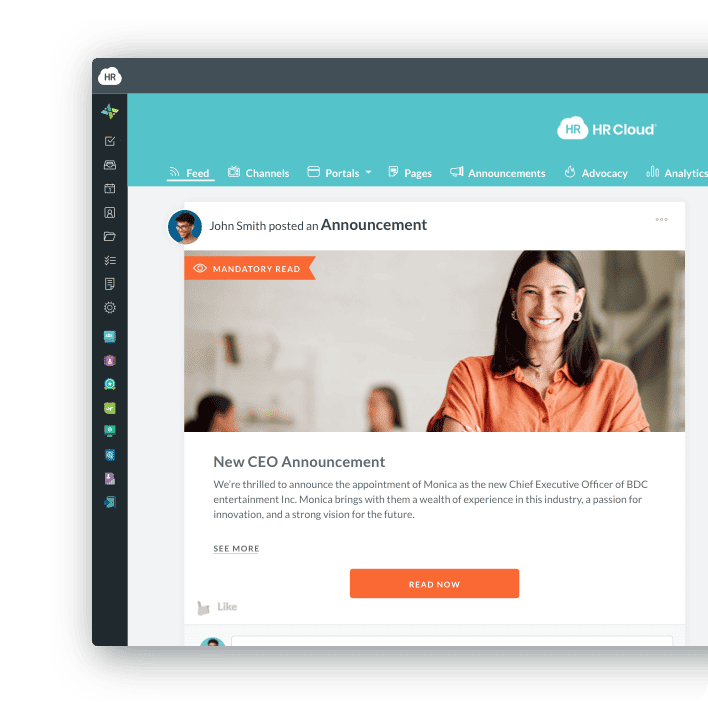
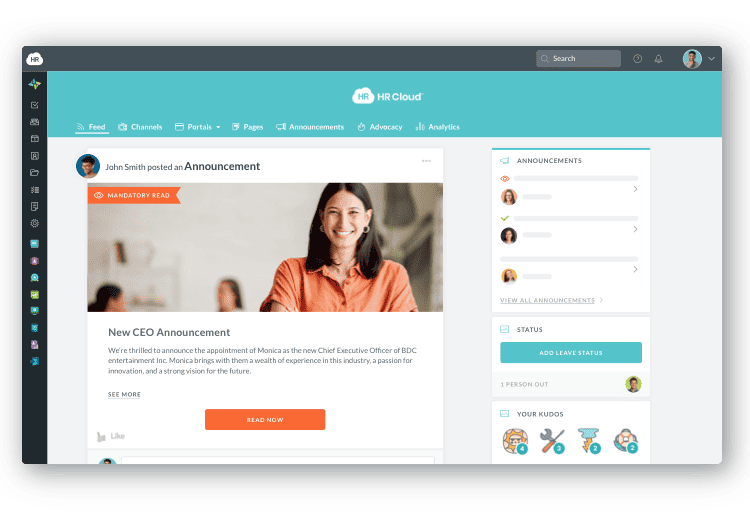
3. Maintain Transparency Even in Remote Working
Transparency shown by organizations is a key determinant of the engagement of their employees. It is one of the paramount determinants of the company culture of an organization. A Harvard Business Review study concludes that employees give their best when senior management has transparent communications with them. But around 50 percent of workers feel that their organizations exhibit a lack of transparency. Given that, it is crucial for organizations to be at least selectively transparent. The idea of transparency, however, seems even more unrealistic in remote work and virtual meetings.
Having said that, HR managers need to identify the right channels for sharing information with remote employees. It can be done by sharing weekly email newsletters or holding virtual meetings like those held to discuss targets. Companies can share information with remote workers through conference calls, video calls, or other collaboration tools. Various strategies for the same can be brainstormed and refined. Otherwise, in the lack of transparency, workers will start to disengage from remote work, affecting employee satisfaction.
4. Virtual Mentorship Programs for Employees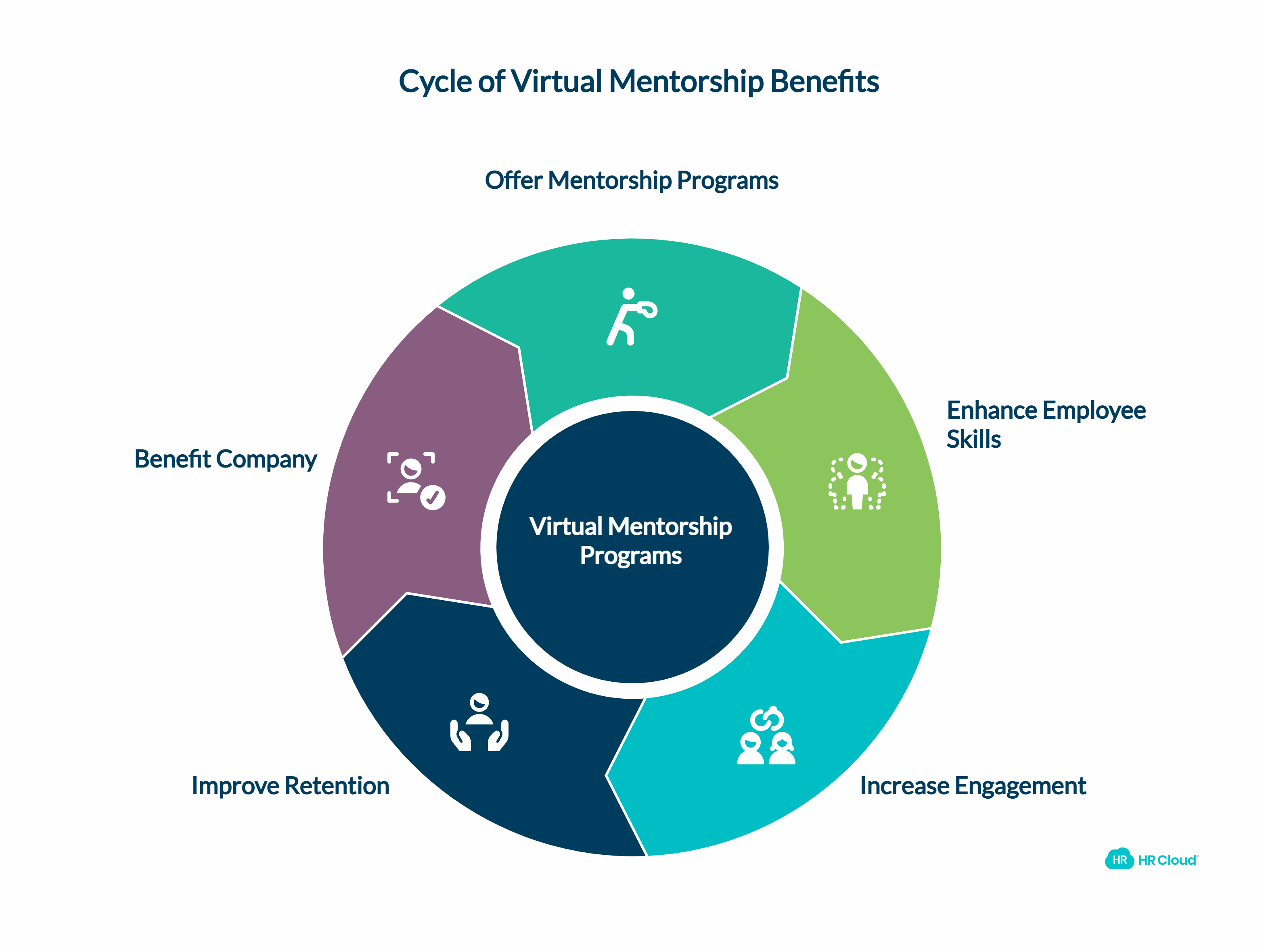
The prospects of career advancement, learning, and development form an integral part of an employee’s allegiance to an organization. Employees are happy to serve organizations that offer meaningful opportunities to learn and develop. The retention rate and engagement levels in such organizations are high. This is the reason why some of the most successful companies invest in mentorship programs for employees. Caterpillar, Fidelity Investments, Google, and General Electric are some of the ventures that offer excellent mentorship programs. In fact, General Electric has leveraged a reverse mentoring program. In this program, subordinates mentor their superiors, and this is where GE scores so well on retention and active engagement.
The best part is, the vertical of online training and learning has risen parallel to remote working opportunities. So, curating online mentorship programs for employees will involve no hassle. Employees will love to learn new skills while working from home. Companies should offer free learning courses and mentoring programs to employees for higher engagement via collaboration tools. In the ultimate sense, it will lead to a more skilled workforce, hence benefiting the company. It will be a smart investment that will serve multiple purposes for companies. For instance, companies can launch mentorship programs on sentiment analysis or social media analysis. Now that is something outside the box for sure! Programs on social media marketing and analysis can help companies dominate social media platforms. Needless to say, winning on social media has now become indispensable for enterprises.
5. Virtual Recognition
Recognition for most employees is of paramount importance. It is the basic human tendency to feel more motivated while being on the receiving end of well-deserved recognition and appreciation. Employees feel great in a usual workplace when they receive recognition in front of their peers, and everyone lauds their efforts. Well, this can even be recreated in a remote working setup. HR managers need to find some intriguing ways to celebrate employees and their tenacious efforts in the virtual office. They can include recognition in the normal day-to-day virtual meetings, or a certificate of appreciation can be mailed personally to employees. There are innumerable ways of extending appreciation and recognition. To cite a small example, companies can reward the best performers with gift cards or shopping vouchers.
Otherwise, the best way out is to ask employees. HR managers can ask employees during general meetings about the best ideas for recognition in a virtual workspace. HR can also make video calls to each employee and seek their suggestions. It is always better to learn from them how they want to be recognized for their valuable contributions. Sometimes, for the best levels of engagement, it is better to do things as they like.
To encapsulate, albeit with some hurdles, remote work has greater room for innovation. As long as HR managers choose to be creative, they can promote high engagement and implement effective remote employee wellness solutions. The key lies in understanding the challenges remote workers face and addressing them. Besides, there should be knowledge of the basic expectations that employees may have from the organization. These anticipations can be different when employees are working from home. Also, keeping in mind that remote working is the way forward, the strategies have to be long-term. The idea should be to evolve dynamic virtual team-building activities and employee engagement activities. The dynamics of employee engagement will keep changing with every new trend. This is why HR professionals should incorporate flexibility and creativity into their ability to manage people and keep remote employees engaged through innovative wellbeing activities and virtual coffee chats.

Keep Reading
45 Boss Day Messages That Actually Mean Something (2026 Guide)
When is Boss Day 2026? Mark your calendar for October 16, 2026 — the annual opportunity
Birthday Wishes for Coworkers: 50+ Messages That Build Workplace Connection
A coworker's birthday isn't just another calendar date—it's a meaningful opportunity to
Embracing Diversity: Recognizing Different Cultures in the Workplace
Workplaces today reflect the incredible diversity of the world around us. People bring
Like What You Hear?
We'd love to chat with you more about how HR Cloud® can support your business's HR needs. Book Your Free Demo

Build a Culture of Recognition. Boost Engagement. Guaranteed.
Workmates empowers employees to stay informed, connected, and appreciated—whether they’re on the front line, in the office, or remote. Recognition drives 12x higher engagement.Trusted by industry leaders in every sector




Cut Onboarding Costs by 60%.
Take the confusion and follow-ups out of onboarding with automated workflows, digital forms, and structured portals—so new hires ramp faster 3X quicker.Trusted by industry leaders in every sector





